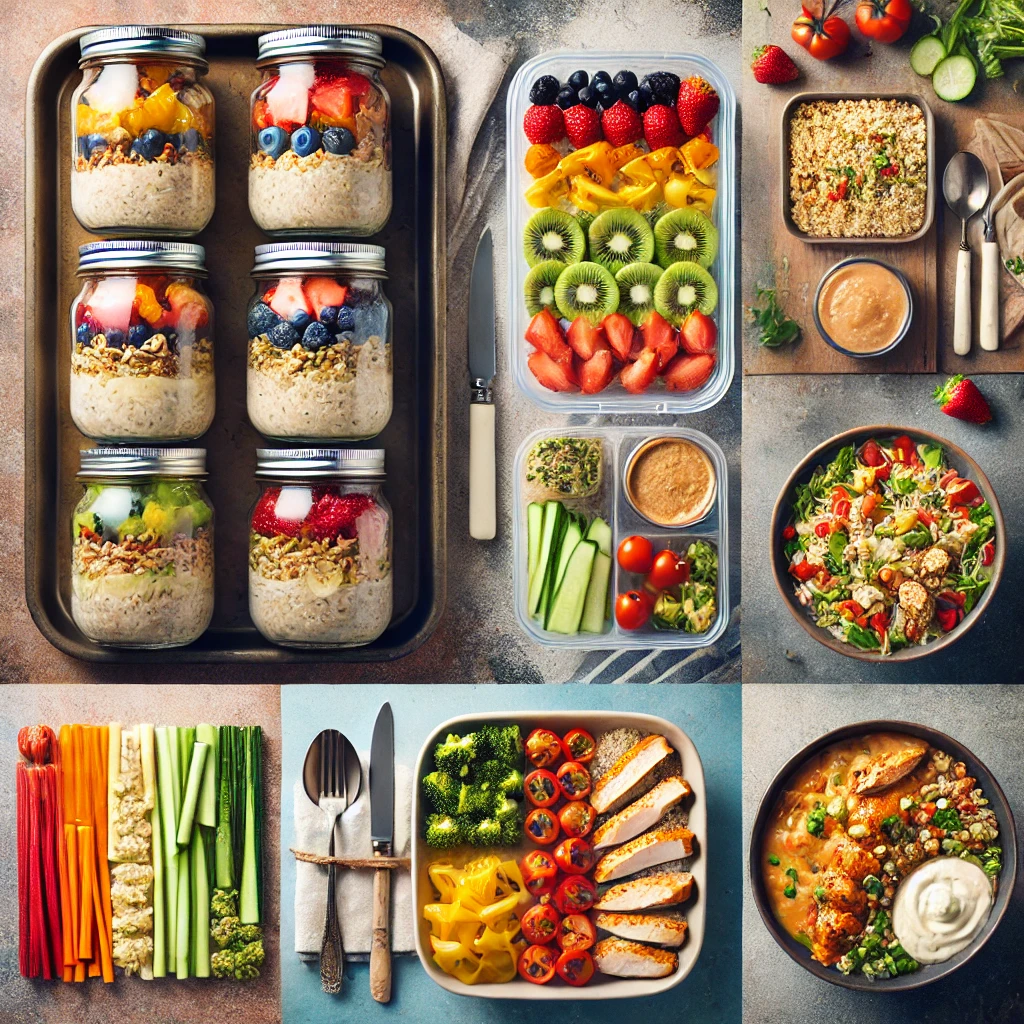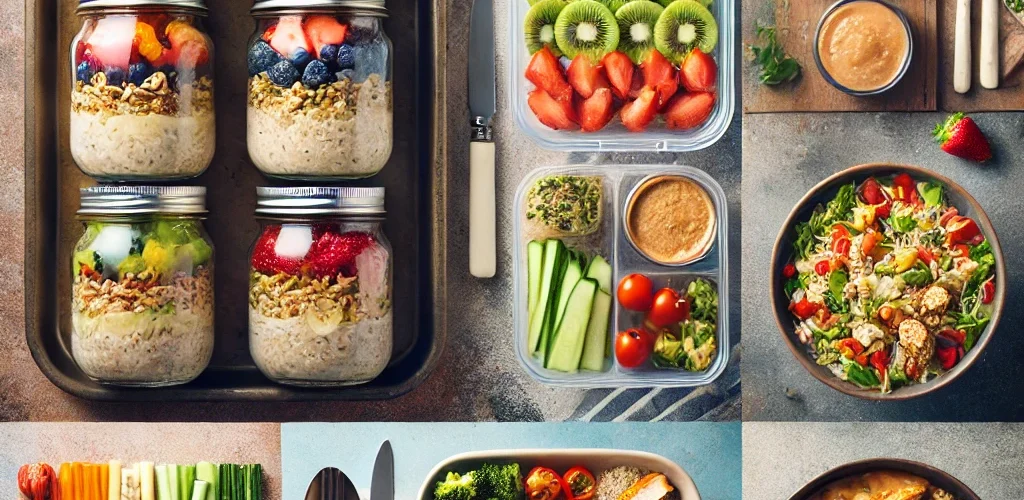
Save time, eat healthier, and stay organized with these meal prep tips!
Introduction
Meal prepping is a game-changer for anyone looking to save time, eat healthier, and stay on track with their goals. Whether you’re a busy professional, a student, or a parent, this ultimate guide to meal prepping will walk you through everything you need to know to get started. Let’s dive in!
Why Meal Prep?
Meal prepping offers countless benefits:
- Saves time: Spend a few hours prepping meals for the week instead of cooking every day.
- Saves money: Avoid last-minute takeout and reduce food waste.
- Promotes healthy eating: Control your portions and ingredients.
- Reduces stress: No more wondering, “What’s for dinner?”
Step 1: Plan Your Meals
1.1 Choose Your Recipes
Start by selecting recipes that are easy to make in bulk and store well. Here are some ideas:
- Breakfast: Overnight oats, egg muffins, or smoothie packs.
- Lunch: Grain bowls, salads in a jar, or wraps.
- Dinner: One-pot meals, sheet pan dinners, or casseroles.
1.2 Make a Grocery List
Once you’ve chosen your recipes, create a detailed grocery list. Organize it by categories (produce, proteins, grains, etc.) to make shopping easier.
Step 2: Gather Your Supplies
Here’s what you’ll need to get started:
- Containers: Invest in high-quality, reusable containers in various sizes.
- Tools: A good knife, cutting board, measuring cups, and a large pot or skillet.
- Labels: Use labels or markers to date your meals and avoid confusion.
Step 3: Prep Like a Pro
3.1 Batch Cooking
- Cook in Bulk: Prepare large quantities of staples like rice, quinoa, roasted veggies, and grilled chicken.
- Use Multi-Taskers: While your oven is on, roast veggies and bake proteins at the same time.
3.2 Portion Control
- Divide Meals: Use your containers to portion out meals for the week.
- Balance Nutrients: Include a mix of protein, carbs, and healthy fats in each meal.
3.3 Store Properly
- Refrigerate: Store meals you’ll eat within 3-4 days in the fridge.
- Freeze: Freeze meals for later in the week or month.
Step 4: Stay Organized
4.1 Label Everything
Label your containers with the date and contents to keep track of freshness.
4.2 Create a Schedule
Plan which meals you’ll eat on which days to avoid getting bored.
4.3 Keep It Simple
Stick to recipes with minimal ingredients and steps, especially when you’re just starting out.
Step 5: Tips for Success
- Start Small: Prep just a few meals for the week until you get the hang of it.
- Mix and Match: Use versatile ingredients (like grilled chicken or roasted veggies) in multiple recipes.
- Stay Consistent: Make meal prepping a weekly habit.
- Get Creative: Experiment with new recipes and flavors to keep things exciting.
Sample Meal Prep Plan
Here’s an example of a beginner-friendly meal prep plan:
Breakfast:
- Overnight Oats: Combine oats, almond milk, chia seeds, and your favorite toppings in a jar.
Lunch:
- Chicken Quinoa Bowls: Layer cooked quinoa, grilled chicken, roasted veggies, and a drizzle of dressing.
Dinner:
- One-Pot Pasta: Prepare a big batch of creamy pasta with veggies and protein.
Snacks:
- Veggie Sticks with Hummus: Pre-cut carrots, celery, and bell peppers for easy snacking.
Frequently Asked Questions
1. How long do prepped meals last?
Most meals last 3-4 days in the fridge or up to 3 months in the freezer.
2. Can I meal prep if I’m vegan/vegetarian?
Absolutely! Focus on plant-based proteins like beans, lentils, tofu, and tempeh.
3. What if I don’t have time to prep for the whole week?
Start with prepping just a few meals or snacks. Every little bit helps!
Conclusion
Meal prepping doesn’t have to be overwhelming. With a little planning and practice, you can save time, eat healthier, and take the stress out of mealtime. Use this ultimate guide to meal prepping as your roadmap to success. Happy prepping!







